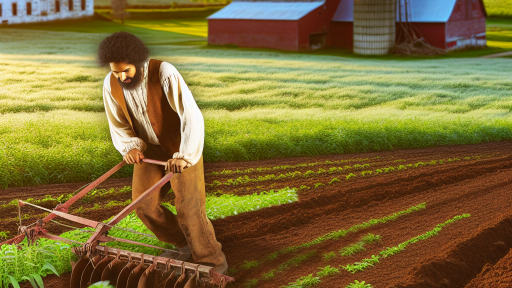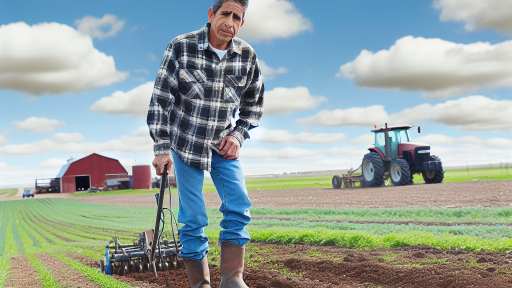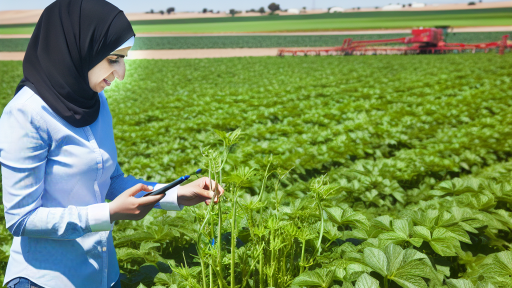Introduction to Agroforestry
Definition
Agroforestry combines agriculture and forestry techniques.
This approach integrates trees and shrubs with crops and livestock.
It aims to create more diverse, productive, and sustainable farming systems.
Types of Agroforestry
There are various types of agroforestry systems.
Each system has unique characteristics and benefits.
Alley Cropping
Alley cropping involves planting crops between rows of trees.
This method enhances soil quality and reduces erosion.
Silvopasture
Silvopasture integrates trees with livestock grazing.
This practice improves animal welfare and forage quality.
Forest Farming
Forest farming cultivates high-value crops under a forest canopy.
It maximizes land use efficiency in shaded areas.
Windbreaks
Windbreaks use trees to protect crops from wind and erosion.
They also enhance biodiversity and create habitat for wildlife.
Benefits of Agroforestry
Agroforestry offers numerous benefits to farmers and ecosystems.
- It increases biodiversity on farms.
- Agroforestry improves soil health and fertility.
- This approach helps in managing pests naturally.
- It contributes to climate change mitigation.
Moreover, agroforestry can provide additional income sources for farmers.
Transform Your Agribusiness
Unlock your farm's potential with expert advice tailored to your needs. Get actionable steps that drive real results.
Get StartedThese benefits make agroforestry a valuable practice for diverse farming.
Benefits of Agroforestry for Farm Diversity and Sustainability
Enhancing Biodiversity
Agroforestry significantly enhances biodiversity on farms.
It encourages the presence of various species of plants and animals.
This diversity creates a more resilient ecosystem.
Additionally, a rich variety of species helps to attract beneficial insects.
Improving Soil Health
Agroforestry practices contribute to better soil health.
Tree roots help to stabilize the soil and reduce erosion.
Moreover, organic matter from fallen leaves enriches the soil.
This leads to improved nutrient cycling and soil structure.
Water Conservation
Implementing agroforestry can enhance water conservation on farms.
Trees help to retain moisture in the soil, reducing the need for irrigation.
They also improve groundwater recharge rates.
In turn, this creates a more sustainable water management system.
Climate Resilience
Agroforestry systems increase farms’ resilience to climate change.
Diverse plant species can better withstand extreme weather events.
This adaptability helps farmers cope with climate variability.
Furthermore, agroforestry contributes to carbon sequestration.
Economic Benefits
Farmers benefit economically from agroforestry practices.
Diverse income streams result from various crops and forest products.
Furthermore, agroforestry can reduce input costs by enhancing ecosystem services.
Farmers often find resilience against market fluctuations through this diversity.
Key Components of Agroforestry Systems
Trees
Trees play a fundamental role in agroforestry systems.
They provide shade, windbreaks, and habitat for wildlife.
Additionally, trees contribute to soil health through leaf litter and root systems.
Showcase Your Farming Business
Publish your professional farming services profile on our blog for a one-time fee of $200 and reach a dedicated audience of farmers and agribusiness owners.
Publish Your ProfileThese systems enhance biodiversity and stabilize ecosystems.
Crops
Crops are essential partners in agroforestry practices.
They coexist with trees to maximize land use effectively.
Crop diversity improves resilience against pests and diseases.
Furthermore, varied planting reduces soil erosion and enhances yields.
Livestock
Integrating livestock into agroforestry offers multiple benefits.
Animals help manage resources through nutrient cycling.
More importantly, they can graze under trees, reducing competition.
This synergy supports a sustainable farming model.
Interaction Between Components
The interaction between trees, crops, and livestock creates dynamic ecosystems.
Each component supports the others, enhancing productivity.
For example, livestock manure enriches soil, benefiting crops.
In turn, crops can provide feed or forage for livestock.
Such relationships foster a balanced agricultural environment.
Delve into the Subject: Nutrient Cycling For Soil Health Improvement
Designing an Agroforestry Plan
Assessing Land Use
Begin by evaluating your current land use practices.
Identify areas that might benefit from agroforestry integration.
Consider the existing crops and their compatibility with trees.
Map out soil types and drainage patterns on your farm.
This mapping will help determine optimal planting locations.
Evaluate the layout of your land for suitable tree placement.
You may choose alley cropping or silvopasture systems.
Discuss with local agriculture consultants for expert advice.
Understanding Local Climate
Your agroforestry plan must consider local climate conditions.
Acquire climate data specific to your region.
Assess average temperatures and precipitation levels.
Determine frost dates to avoid planting sensitive species.
Research native tree species and their climate resilience.
Choose plants that thrive in your climate for best results.
Design your plan with these climatic factors in mind.
Creating Diverse Planting Schemes
Diversity is key in agroforestry systems.
Incorporate a variety of trees, shrubs, and crops.
This approach enhances biodiversity and ecosystem health.
Plant nitrogen-fixing species to improve soil fertility.
Consider fruit or nut trees for additional food production.
Implementing multiple layers of plants maximizes space usage.
Monitor the growth of each species for effective management.
Establishing Sustainable Practices
Utilize sustainable farming practices throughout your plan.
Implement crop rotation and cover cropping techniques.
Manage pests naturally to reduce chemical usage.
Showcase Your Farming Business
Publish your professional farming services profile on our blog for a one-time fee of $200 and reach a dedicated audience of farmers and agribusiness owners.
Publish Your ProfileInvest in sustainable water management systems.
Incorporate organic mulch to retain soil moisture.
Regularly assess and adjust management practices as needed.
Educate yourself and your workers on sustainable techniques.
Learn More: Integrating Hydroponics for Water-Efficient Farming
Integrating Agroforestry with Existing Farming Practices
Understanding Agroforestry
Agroforestry combines agriculture with tree planting.
This practice enhances biodiversity on farms.
It also improves soil health and resilience.
Farmers can achieve greater crop yields through agroforestry.
Benefits of Integration
Integrating agroforestry into existing practices offers multiple advantages.
- Increased crop diversity promotes ecosystem stability.
- Trees provide shade and reduce soil erosion.
- Crop rotation with trees enhances nutrient cycling.
Moreover, agroforestry can improve farm profitability.
Designing Agroforestry Systems
Start by assessing your current farming system.
Consider the types of crops you currently grow.
Identify trees that complement these crops.
For instance, fruit trees can enhance market opportunities.
Choose tree species that adapt well to your local environment.
Managing Agroforestry Effectively
Effective management is crucial for successful integration.
Regularly monitor tree growth and crop health.
Implement a proper pruning schedule for trees.
This practice ensures they don’t overshadow crops too much.
Additionally, plan for water management to support both crops and trees.
Engaging with the Community
Collaborate with local agricultural extension services.
They can provide valuable resources and knowledge.
Participating in community workshops can expand your understanding.
Networking with other farmers will also inspire new ideas.
Learn More: Water Management Techniques For Healthy Soil

Case Studies: Successful Agroforestry Implementation
Shady Acres Farm in Oregon
Shady Acres Farm has transformed its landscape through agroforestry.
The farm integrates fruit trees with annual crops effectively.
This design enhances food production while providing shade and protection.
Farmers report improved yields from both crops and fruit trees.
Moreover, biodiversity on the farm has increased significantly.
Beneficial insects and wildlife thrive in this diverse environment.
Green Fields Agroforestry Project in Australia
The Green Fields Agroforestry Project has achieved great success in Australia.
This initiative combines timber production with traditional grain farming.
Farmers practice intercropping to maximize land use efficiently.
As a result, soil erosion has decreased substantially.
Farmers also enjoy better water retention in the soil.
Ultimately, this project enhances both profitability and sustainability.
Rural Development Initiative in Brazil
A Rural Development Initiative in Brazil promotes agroforestry among smallholders.
This program emphasizes training and support for local farmers.
Showcase Your Farming Business
Publish your professional farming services profile on our blog for a one-time fee of $200 and reach a dedicated audience of farmers and agribusiness owners.
Publish Your ProfileParticipants learn to plant native trees alongside cash crops.
Consequently, crop resilience to climate change has improved.
Farmers report higher income levels due to diversified products.
Furthermore, the initiative enhances community engagement and cooperation.
Successful Practices to Note
- Integrate crops with trees for mutual benefits.
- Adopt intercropping strategies to increase yields.
- Engage in community training programs for knowledge sharing.
- Regularly monitor and adapt practices based on outcomes.
These successful case studies illustrate the potential of agroforestry.
They highlight how diverse agricultural practices enhance sustainability.
As these examples show, agroforestry is a viable path forward for farmers.
See Related Content: Integrated Pest Management for Organic Farming
Challenges and Solutions in Implementing Agroforestry
Understanding the Key Challenges
Implementing agroforestry presents unique challenges for farmers.
Many farmers lack the necessary knowledge and training.
Furthermore, financial constraints often impede initial investments.
Pests and diseases can threaten tree crops and main commodities.
Additionally, market access for agroforestry products may be limited.
Addressing Knowledge Gaps
Education programs can effectively bridge knowledge gaps among farmers.
Workshops and demonstrations offer hands-on learning opportunities.
Farmers should connect with local agricultural extension services.
Moreover, peer learning networks can facilitate shared experiences.
Financial Support and Incentives
Government grants and subsidies can alleviate financial burdens.
Promoting agroforestry through tax incentives encourages adoption.
Microloans offer an accessible financing option for smallholders.
Creating partnerships with NGOs can provide additional support.
Managing Pests and Diseases
Integrated pest management (IPM) techniques help control outbreaks.
Regular monitoring for pests can lead to early interventions.
Additionally, diversifying crops can reduce vulnerability to diseases.
Improving Market Access
Building cooperatives can strengthen market positions for farmers.
Value-added products improve profitability and marketability.
Investing in local processing facilities can enhance supply chains.
Public awareness campaigns can increase consumer demand for agroforestry products.
Leveraging Technology
Utilizing technology enhances the implementation of agroforestry systems.
Mobile applications can provide farmers with valuable real-time data.
Remote sensing technologies can aid in monitoring crop health.
Additionally, digital marketplaces expand access to consumers.
Future Trends in Agroforestry and its Role in Climate Resilience
Innovative Practices in Agroforestry
Agroforestry practices are evolving to meet modern challenges.
Farmers are increasingly integrating new crop varieties into their systems.
This diversity improves resilience against pests and diseases.
Moreover, agroecological methods are becoming more popular.
These methods enhance soil health and biodiversity.
Technological Advancements
Technology is transforming agroforestry practices.
Drones are now used for monitoring crop health and growth patterns.
Remote sensing technologies improve land management decisions.
Showcase Your Farming Business
Publish your professional farming services profile on our blog for a one-time fee of $200 and reach a dedicated audience of farmers and agribusiness owners.
Publish Your ProfileFurthermore, precision agriculture tools provide efficient resource use.
Farmers are adopting data analytics to optimize production.
Policy Support and Community Engagement
Government policies increasingly support agroforestry initiatives.
Subsidies and grants encourage farmers to adopt these practices.
Community engagement is essential for successful implementation.
Local organizations are helping spread knowledge and resources.
Collaboration among farmers enhances innovation and sustainability.
The Impact on Climate Resilience
Agroforestry plays a vital role in climate change mitigation.
It sequesters carbon, helping to reduce greenhouse gas emissions.
Additionally, it protects watersheds and enhances biodiversity.
These practices also improve soil quality and water retention.
Consequently, agroforestry systems boost overall farm productivity.
Looking Ahead
The future of agroforestry appears promising and vital.
Continued research will drive innovations in this field.
Additionally, more farmers will recognize its benefits.
As climate challenges increase, agroforestry will become more essential.
Ultimately, embracing these practices will foster sustainable agriculture.




